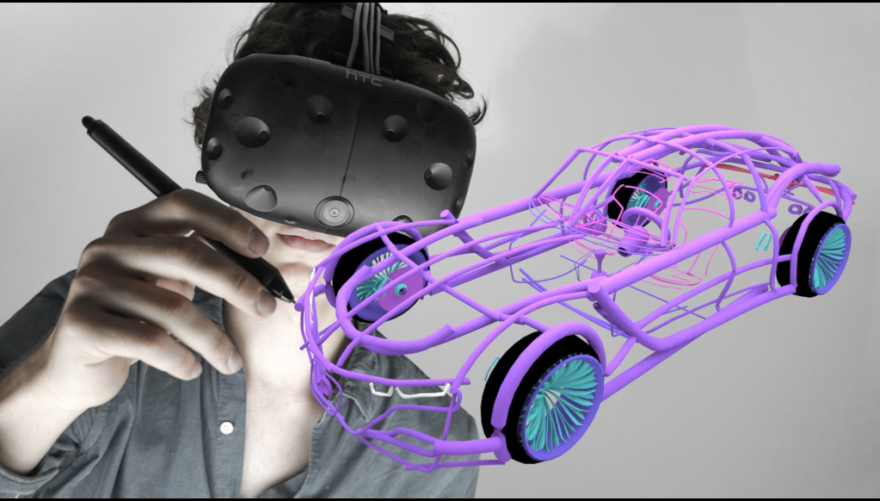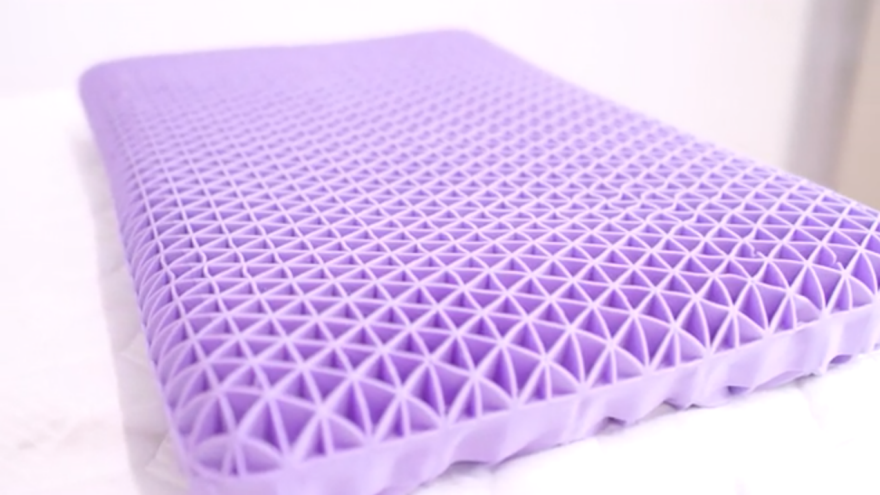When we last spoke to the Gravity Sketch team in March of 2014, they had just unveiled their prototype for a 3D sketchpad.
At the time, Oluwaseyi Sosanya, Guillaume Couche, Pierre-Yves Paslier and Daniela Paredes Fuentes were all students at the Royal College of Art and Gravity Sketch was their vision for the next evolution of sketching. Looking at the rise of augmented and virtual reality, the students saw an opportunity to create a tool for designers by designers, that allowed users to sketch in 3D.
The team's initial idea for Gravity Sketch had users wear virtual reality glasses to draw objects in space above a handheld glass platform. By moving the platform, users could manipulate and develop their drawing, much like one might build out a sculpture.
Two years later, the team is ready to bring Gravity Sketch to the masses—with a few changes.
For one, there's no hardware. Zilch.
After presenting their prototype, the team joined the school's incubator, Innovation RCA, where they were urged to abandon their physical prototype in lieu of a digital solution. "We came up with some promising directions in terms of hardware, but soon we had to accept the fact that software would be our strongest play, as many AR and VR devices were not yet commercially available," says Sosanya.
Shifting their focus to software inadvertently made the product more accessible to many who might not be able to cough up the dinero necessary for a translucent glass platform interface. It also forced the team to really define what made their program different from any other 3D modeling program: its capacity for touch and gesture input.
The team prioritized developing the software in such a way that it could use a touchscreen as input, using touch and gesture to shape designs. The team launched Gravity Sketch iOS, an iPad application, in March of this year, as a way to gather user feedback and further hone in on what they were looking for in terms of tools and features.
"We took a lot of time to craft a really natural user experience for the iPad with the aim to get users with little to no CAD knowledge to download and get involved," Sosanya says. Not ones to forget their RCA education, the team emphasized a user-centric approach to the design, including ample field testing and user research at every step of the process.
"We would go to cafes (or on the tube), sit next to people and start sketching on the iPad in 3D. As soon as we would catch their attention or they would lean over ever so slightly we would catch them and start to introduce the tool, if they could create something reasonable in three minutes or less we knew we had designed a tool or feature properly. If they would smile while using the software sketching some strange shapes we knew we were on the right track," Sosanya says.
Those tests helped inform what certain gestures would mean and how users could naturally interact with the software. "Users often find it hard to answer questions around the usability, as they have little to no benchmark of what certain AR and VR experiences should feel like," Sosanya says. "To mitigate this confusion, we like to have more analog engagements with our users. We do things like play charades with fellow artists and designers to get them to explain how they may scale something up or make a copy of something. We then take these gestures and interactions into the digital space, and from there we start testing the technology and gathering feedback."
![]()
From those tests, the team also heard resounding feedback asking when the product would be available on desktop. "We were a bit hesitant to release something on the desktop, as we felt that the user experience wouldn't be the same if you were using a mouse, however if the user had a Wacom tablet we could produce a killer experience," Sosanya says.
The team reached out to Wacom earlier this year and have been working on a version of the software that would use their technology. Simultaneously, the HTC Vive was officially released in April 2016, pushing the team to complete the VR component of the experience, which will be supported on both HTC and Oculus controllers.
"We began working on these devices in parallel and have developed to a point where we feel that more hands on deck would really push this software to the next level," Sosanya says. "We decided that a Kickstarter campaign would be that perfect way to present our most aspirational development yet and get the funding to take it to the market." Sosanya, Paredes and new collaborator Daniel Thomas are part of the team of designers and engineers that are now bringing Gravity Sketch to Kickstarter, as they look to raise the funds to complete the project.
Folks who back Gravity Sketch on Kickstarter at around £25 (roughly $32) can be among the first to get a license with full access to Gravity Sketch desktop and VR, £20 less than the retail rate post-launch. With just shy of $5,000 raised at press time, the team still has a long way to go over the next month to reach their £50,000 ($64,887) goal.
As for that initial gleaming plank of glass, maybe all hope isn't lost. "We are holding back on the hardware element for now, but we have a lot of prototypes and tests that may show their face in due time," Sosanya says.
![]()






































































































